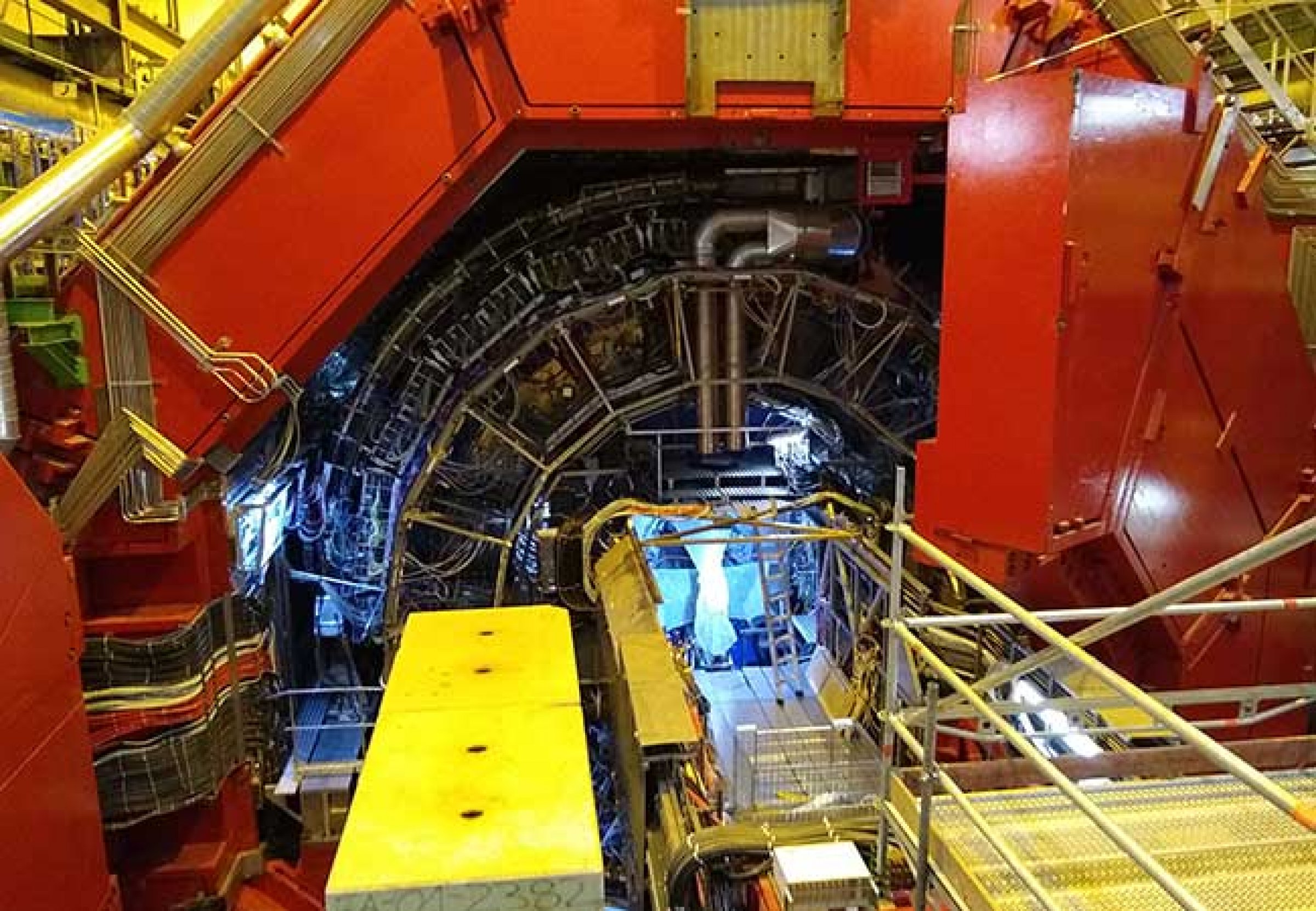November 14, 2023
Measurement record at CERN accelerator - data processing supported by FIAS
Mimicking the big bang
New measurement record at the CERN accelerator, recorded with the ALICE detector. The enormous amount of data is processed by a computing cluster headed by FIAS Senior Fellow Volker Lindenstruth.
After a five-year break, the large LHC accelerator at the CERN international research institute has once again brought lead ions to collision. The colliding matter dissolves into its components for an extremely short time, reaching a state similar to that of the universe a millionth of a second after the Big Bang. The particle tracks of the collisions are recorded by the house-sized ALICE detector, which researchers from FIAS and Goethe University have helped to improve. A new record was set in the first month alone: 20 times more collision events were registered than in the data collection periods of previous years combined.
Between the end of September and the end of October, the accelerator at the European Nuclear Research Centre CERN in Geneva generated lead-ion collisions at the world's highest-ever collision energy of 5.36 tera electron volts per colliding nuclear particle (nucleon-nucleon collision). Not only the collision energy, but also the collision rates were significantly increased. In addition to the collision energy, the collision rates also increased significantly compared to the data taking periods of previous years. The specialised ALICE detector recorded 20 times more events than in the four one-month data collection periods since 2010 combined.
This is important because of the tremendous number of particles that are created and decay in a very short timeframe during the collisions. Recording the tracks of these particles allows conclusions to be drawn about exactly what happens at the moment of collision and shortly thereafter: The particles dissolve into their elementary components – quarks and gluons – and form a kind of “matter soup”, the quark-gluon plasma. Immediately afterwards, new, very unstable particles form again, which finally transform into stable particles in complex decay chains. In this way, researchers in the ALICE experiment are studying the properties of matter as it existed shortly after the Big Bang.
Frankfurt research groups are part of the experiments: The new record was first made possible because the world’s most powerful particle accelerator, the Large Hadron Collider (LHC), was upgraded during the four-year reconstruction phase. The upgrades of the ALICE detector during the same timeframe enable it to record the traces of the LHC’s higher collision rates.
The enormous amount of data generated during the measurements – which reaches the range of terabytes per second for the TPC alone – constitutes a major challenge. To be able to sufficiently reduce the amount of data stored, this data stream must be processed in real time, using effective pattern recognition methods. The Event Processing Nodes (EPN) computing cluster was set up specifically for this experiment. Based on both conventional computing cores (CPUs) and special graphics processors, the EPN project is led by Volker Lindenstruth, Senior Fellow at FIAS and Professor for High-Performance Computer Architecture at Goethe University.
